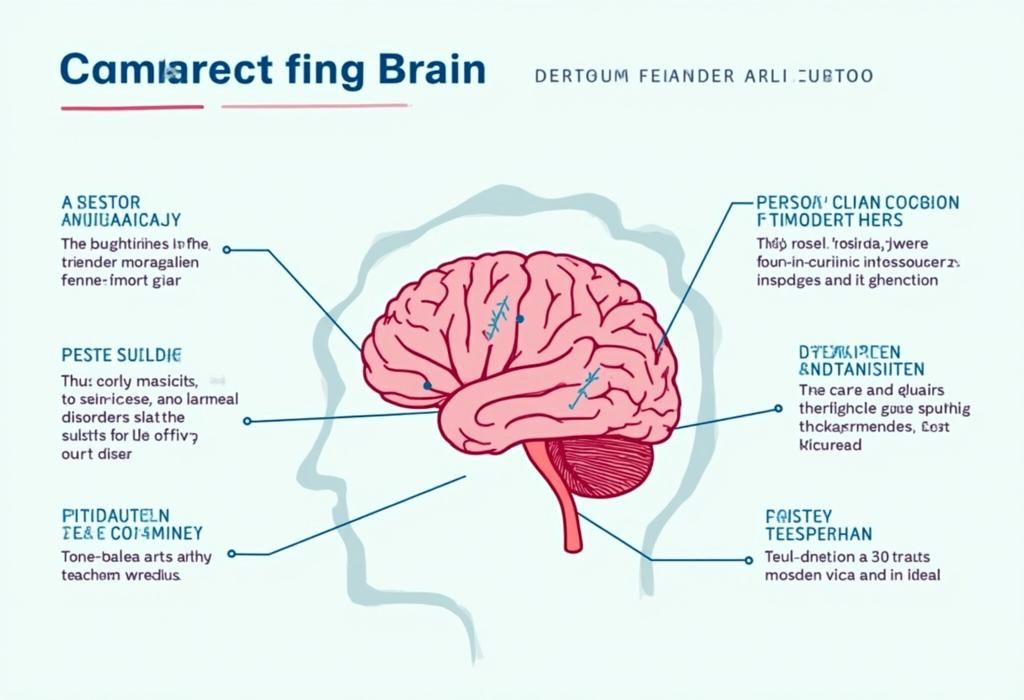For more details on this content, please review the step-by-step guide and frequently asked questions.
The Hidden World of Neurological Disorders

Step-by-Step Guide
Understanding Neurological Disorders
Neurological disorders encompass a wide range of conditions that affect the nervous system. This includes the brain, spinal cord, and nerves throughout the body. Common examples include epilepsy, multiple sclerosis, migraines, Parkinson’s disease, and Alzheimer’s. To understand these disorders, one must begin recognizing the structure and function of the nervous system.
The Structure of the Nervous System
The nervous system is divided into two main parts: the central nervous system (CNS), which includes the brain and spinal cord, and the peripheral nervous system (PNS), comprising all other neural elements. The CNS processes incoming sensory information and coordinates responses, while the PNS transmits signals to and from different parts of the body.
Common Neurological Disorders
Familiarize yourself with several prevalent neurological disorders: Epilepsy (characterized by seizures), Multiple Sclerosis (which affects the brain and spinal cord, leading to communication problems), Parkinson’s disease (a movement disorder that affects coordination), Alzheimer’s disease (a progressive form of dementia), and more. Each of these conditions has specific symptoms, causes, and treatments.
Symptoms and Diagnosis
Understanding the symptoms is crucial; they may vary widely based on the disorder. Symptoms may include memory loss, muscle weakness, sensory disturbances, coordination issues, and altered behavior. Proper diagnosis often involves neurological examinations, imaging tests (like MRI or CT scans), and sometimes lab tests to evaluate brain function.
Causes of Neurological Disorders
The causes of neurological disorders can be complex and varied. They may be attributed to genetic factors, infections, physical trauma, autoimmune responses, or neurodegenerative processes. Some disorders may arise from environmental influences or lifestyle factors, while others may have no known cause.
Understanding Treatments and Management
Treatment strategies depend on the specific disorder and often include medications, lifestyle changes, physical therapy, and sometimes surgery. Medications may include anticonvulsants for epilepsy, disease-modifying therapies for multiple sclerosis, or antidepressants for mood-related neurological conditions.
The Role of Rehabilitation
Rehabilitation is essential for individuals with neurological disorders. It focuses on regaining as much independence as possible. Programs may involve physical, occupational, and speech therapy tailored to the individual’s needs, aimed at improving function and quality of life.
Support Systems and Resources
Support systems are vital. Patients often benefit from connecting with support groups, advocacy organizations, and mental health professionals. Resources can provide crucial information about coping strategies, emerging research, and community support.
Recent Research and Future Directions
Research into neurological disorders is rapidly advancing. Scientists are exploring genetic therapies, neuroprotective strategies, and new medications. Staying informed about current studies can provide insights into better disease management and potential breakthroughs.
Living with a Neurological Disorder
Living with a neurological condition can be challenging, but many individuals lead fulfilling lives. Emphasis on mental health, regular physical activity, and a supportive environment can greatly enhance one’s quality of life. Education, communication with healthcare providers, and self-advocacy are essential components of living well.








